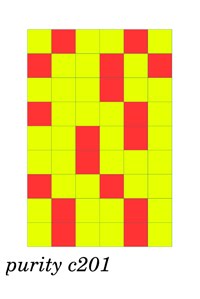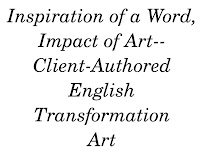The code I use to make English Transformation Art can be viewed as the logical function called "toggle". Starting at logical zero, one strobe causes a change to one. A second strobe causes a change back to zero. So if we represent each strobe by a stroke, one stroke equals one and two strokes equals zero.
But we can do this for three or more strobes instead of two. In the case of three, we start at zero, then one strobe changes the value to one, a second strobe changes the value to two, and a third strobe changes the value back to zero. This is a toggle, a tri-toggle, if you will.
Four would be analogous--a quadritoggle.
The set of all such toggles we could call "polytoggles".
Polyhedrons begin at the four-sided tetrahedron. Polygons begin at the three-sided triangle. And now we have added polytoggles, which begin at the two-sided bi-toggle, making a sequence of three members which begin with four, three, and two sides. Polytoggles live in two dimensions--along a line. Call the runs of ones in a polytoggle a vertex, analogous to the vertex of a polyhedron or polygon. They are separated by a side, analogous to the side of a polygon. Irregular polytoggles have unequal sides, and regular polytoggles have equal sides. Another grade of regularity comes for a regular polytoggle when the distance between vertices is twice the distance between strokes in any vertex.
Polytoggles can be concatenated just like polygons and polyhedrons can. The set of concatenated double regular tritoggles includes the English Transformation Art forms.
Sunday, April 25, 2010
Subscribe to:
Post Comments (Atom)






No comments:
Post a Comment